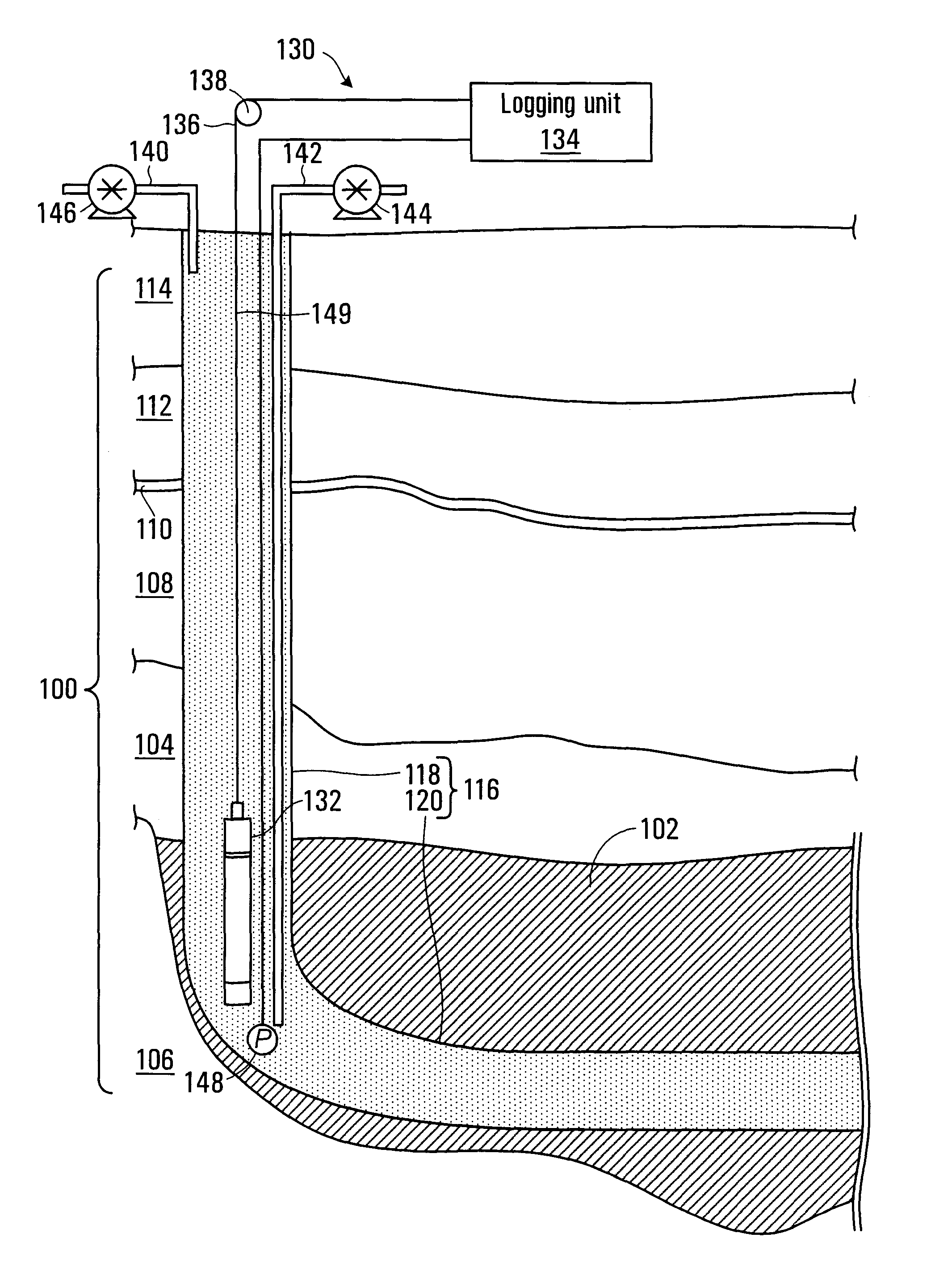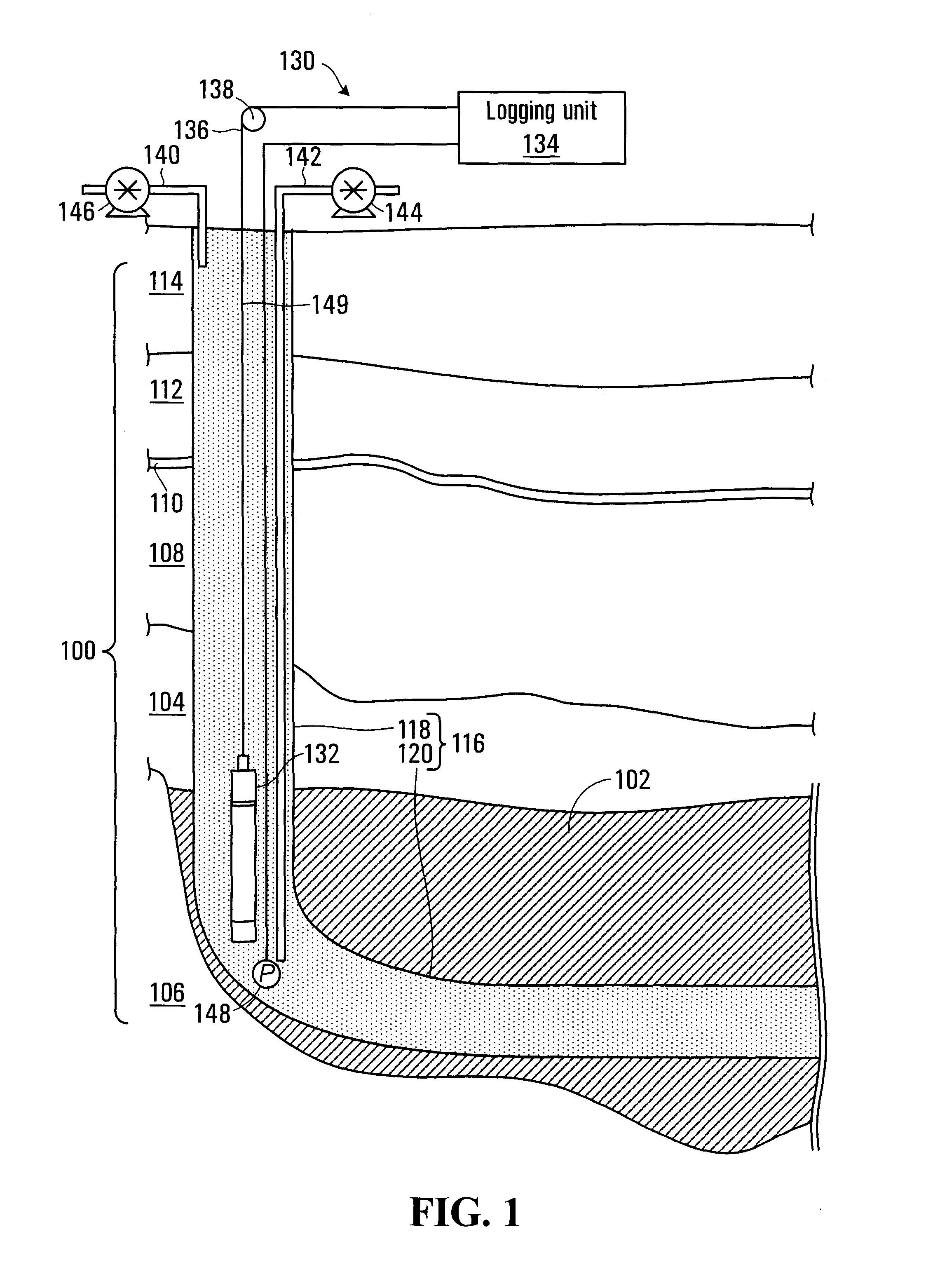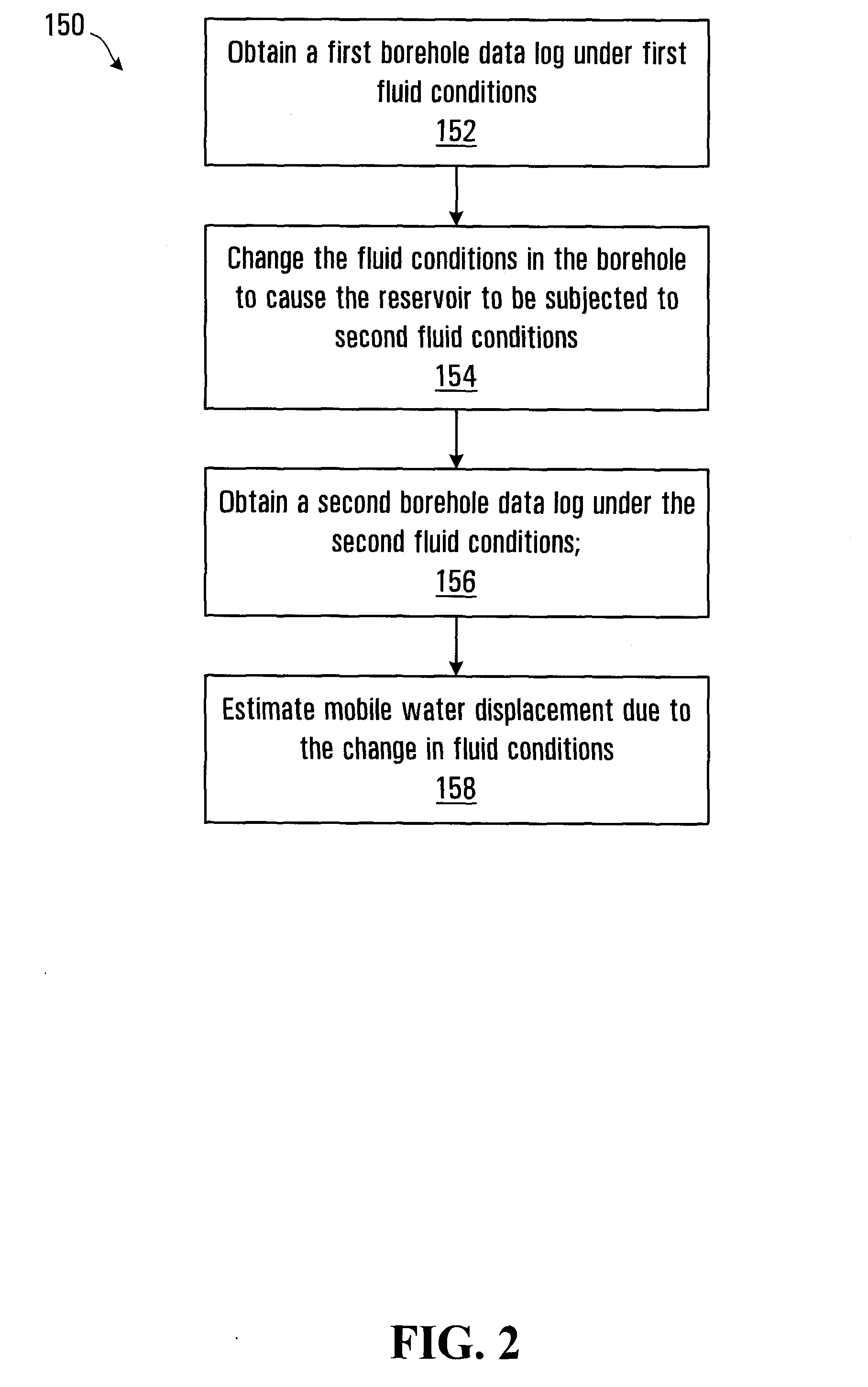Process for determining mobile water saturation in a reservoir formation
a reservoir formation and mobile water technology, applied in the direction of nuclear radiation detection, well-logging electric/magnetic detection, reradiation, etc., can solve the problems of uneconomical mining of these reserves using conventional techniques, disturb the in-situ conditions, and inaccessible resources, so as to facilitate direct determination of a first water volume and facilitate direct determination of a second water volume
- Summary
- Abstract
- Description
- Claims
- Application Information
AI Technical Summary
Benefits of technology
Problems solved by technology
Method used
Image
Examples
Embodiment Construction
[0075]Referring to FIG. 1, an exemplary reservoir formation is shown at 100. In the embodiment shown the formation 100 includes a permeable layer 104, an underlying less permeable or impermeable rock layer 106, and several other rock layers 108-114 overlying the permeable layer 104. The permeable layer 104 includes pores that facilitate accumulation of fluids, which are trapped by the underlying layer 106 to define a reservoir 102 within the permeable layer 104. Fluids trapped in the reservoir 102 may include fluids such as hydrocarbons and water, for example. In the embodiment shown in FIG. 1, the reservoir 102 only occupies a portion of the permeable layer 104, although in other embodiments the reservoir may extend substantially throughout the permeable layer. In one embodiment the permeable layer 104 may comprise a porous rock formation. In other embodiments the permeable layer 104 may comprise sand particles having interstitial spaces in-between particles that act as pores for c...
PUM
 Login to View More
Login to View More Abstract
Description
Claims
Application Information
 Login to View More
Login to View More - R&D
- Intellectual Property
- Life Sciences
- Materials
- Tech Scout
- Unparalleled Data Quality
- Higher Quality Content
- 60% Fewer Hallucinations
Browse by: Latest US Patents, China's latest patents, Technical Efficacy Thesaurus, Application Domain, Technology Topic, Popular Technical Reports.
© 2025 PatSnap. All rights reserved.Legal|Privacy policy|Modern Slavery Act Transparency Statement|Sitemap|About US| Contact US: help@patsnap.com



